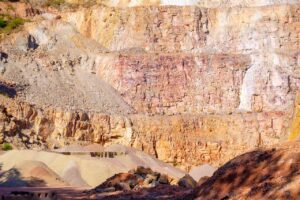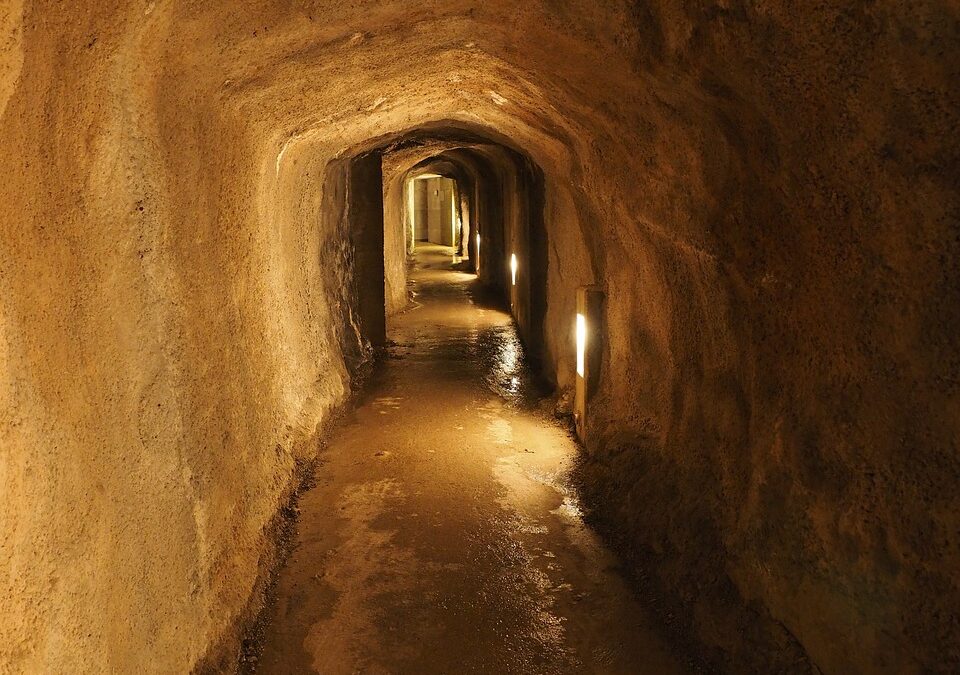Underground mining has been a cornerstone of human civilization, shaping societies, industries, and economies for thousands of years. This article explores the history of underground mining, from its earliest days to its modern advancements, highlighting the methods, challenges, and innovations that have defined this vital practice.
What is Underground Mining?
Underground mining involves extracting valuable minerals or resources from beneath the Earth’s surface through tunnels, shafts, or chambers. This method is used when minerals are located deep within the ground and cannot be accessed through surface mining. Underground mining is often employed to extract resources such as coal, gold, silver, and copper.
The complexity and efficiency of underground mining have evolved over centuries, making it one of the most fascinating aspects of mining history.
Which Civilizations Practiced Underground Mining?
Underground mining dates back to ancient times, with some of the earliest practices documented in the following civilizations:
- Ancient Egyptians: Known for mining gold and copper in underground tunnels as early as 3000 BCE.
- Romans: Pioneered large-scale underground mining operations across Europe, extracting silver, gold, and lead.
- Chinese Dynasties: Engaged in underground mining for coal and precious metals around 2000 BCE.
- Pre-Columbian Civilizations: Indigenous communities in the Americas practiced underground mining for gold and turquoise.
Each civilization brought unique methods and innovations to underground mining, laying the groundwork for modern practices.
What Were The First Materials Mined Underground?
The earliest materials mined underground were those essential for survival and trade, including:
- Copper: Used for tools, weapons, and ornaments.
- Gold: Valued for its rarity and beauty, often used in jewelry and religious artifacts.
- Silver: Sought after for currency and decorative purposes.
- Salt: Known as “white gold,” it was crucial for food preservation and trade.
These materials were often mined using simple tools such as picks, hammers, and chisels, highlighting the ingenuity of early miners.
What are the Historical Methods Used in Underground Mining?
Early underground mining methods relied on manual labor and rudimentary tools. Key techniques included:
- Fire-Setting: Heating rocks with fire and cooling them rapidly with water to fracture the material.
- Room and Pillar Mining: Extracting minerals while leaving structural “pillars” to support the mine roof.
- Bell Pit Mining: Excavating shallow, bell-shaped pits to access minerals close to the surface.
- Hushing: Using water to remove overburden and expose mineral veins.
These methods, though innovative for their time, posed significant safety risks to miners.
How Has Underground Mining Evolved Over Time?
Underground mining has undergone significant evolution, driven by advancements in tools, techniques, and safety measures. Key milestones include:
- Medieval Period: Introduction of iron tools and water-powered pumps to remove floodwater.
- Renaissance Era: Improved ventilation systems and the use of explosives for more efficient excavation.
- Industrial Revolution: Mechanization of mining equipment revolutionized underground operations.
- 20th Century: Adoption of electric-powered machinery and improved safety regulations.
Today, underground mining relies heavily on automation and advanced technologies, increasing productivity while reducing risks.
What are Some Notable Historical Underground Mines?
Throughout history, several underground mines have gained fame for their scale, resources, or historical significance:
- The Great Orme Copper Mine (Wales, UK): Operational during the Bronze Age, known for its extensive tunnel systems.
- The Roman Mines of Rio Tinto (Spain): Rich in copper and precious metals, mined extensively by the Romans.
- The Witwatersrand Gold Mine (South Africa): A significant contributor to the global gold supply since the late 19th century.
- The Comstock Lode (Nevada, USA): Famous for its rich deposits of silver and gold during the 19th-century gold rush.
These mines reflect the ingenuity and determination of miners across eras.
How Did The Industrial Revolution Impact Underground Mining?
The Industrial Revolution marked a turning point in the history of underground mining, introducing mechanization and large-scale operations. Key impacts include:
- Increased Productivity: Steam-powered machinery enabled deeper and faster excavation.
- Improved Ventilation: Systems like bellows and fans enhanced air quality in mines.
- Enhanced Transportation: Rail systems and conveyor belts streamlined the movement of materials.
- Expanded Labor Force: The demand for coal and metals led to the growth of mining communities.
However, this period also highlighted the need for improved safety measures, as accidents and health issues became more common.
What Technological Advancements Have Influenced Underground Mining?
Technological innovations continue to shape the history of underground mining, including:
- Automated Machinery: Reduces human involvement in dangerous tasks.
- GPS and Geospatial Mapping: Enhances precision in locating mineral deposits.
- Ventilation Control Systems: Ensure optimal air quality and temperature underground.
- Remote Monitoring and Control: Enables real-time oversight of mining operations.
These advancements have made mining safer, more efficient, and more sustainable.

What are the Safety Challenges Associated With Underground Mining?
Despite technological progress, underground mining presents inherent safety challenges:
- Roof Collapses: A constant risk in poorly supported tunnels.
- Toxic Gases: Exposure to gases like methane and carbon monoxide.
- Flooding: Water ingress from aquifers or surface water.
- Worker Fatigue: Long hours in confined, demanding environments.
Modern safety protocols, including regular inspections, emergency drills, and advanced monitoring, aim to mitigate these risks.
The Evolution and Impact of Underground Mining Through History
From ancient civilizations to modern industries, underground mining has played a pivotal role in human progress. Its history reflects a journey of innovation, resilience, and adaptation. As the industry continues to evolve, the focus remains on balancing resource extraction with sustainability and safety, ensuring its legacy for future generations.

